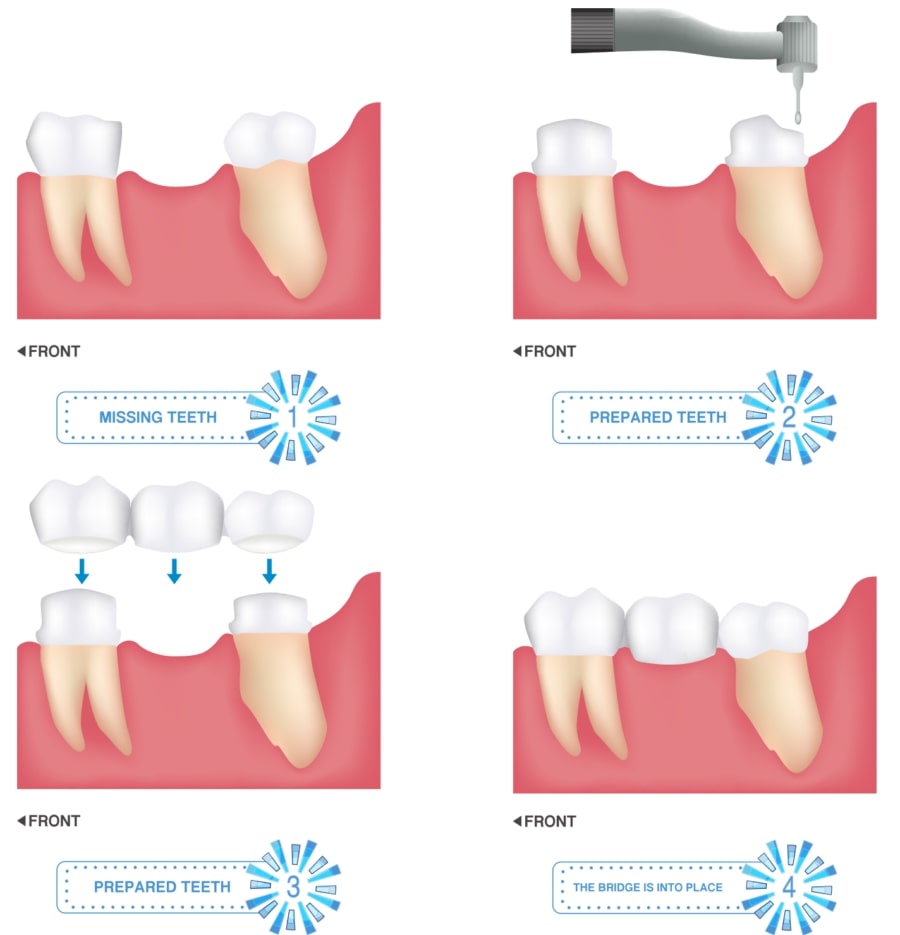Dental bridges are natural-looking tooth replacements that help maintain facial structure, reduce stress on the jaw and fill in the gaps caused by missing teeth.
A dental bridge can be used to:
- Restore an attractive smile
- Reduce the risk of gum disease
- Restore the ability to bite and chew
- Improve speech
- Prevent remaining teeth from drifting out of position
Traditional Bridges
Also known as fixed bridges, traditional bridges are used to replace one or more missing teeth. The procedure involves creating a crown for the tooth or implant on either side of the missing tooth, with a pontic, or a false tooth, in between. Fixed bridges are the most common type of dental bridges and are either made out of porcelain fused to metal or out of ceramics.
The Dental Bridge Procedure
There are several steps that are taken in order to create a bridge:
First Step
The adjacent teeth must be prepared. This involves removing some of the enamel to allow room for the crown to be placed over them.
Second Step
Impressions of the teeth are made. These will be sent to a laboratory so a bridge, a false tooth or pontic, and crowns can be created to fit the unique configuration of the patient’s mouth. During the 2 to 3 weeks while the bridge is being manufactured, the patient will be given a temporary dental bridge to protect the exposed teeth and gums.
Third Step
During the next dental visit, the temporary bridge will be removed and replaced with the new, permanent bridge. The doctor will make sure the bridge fits properly and bond it to the teeth.
Results Of A Dental Bridge Placement
The success of any bridge depends on its foundation, the other teeth, gums or bone to which it is attached. Therefore, it’s very important to keep your existing teeth, gums and jaw healthy and strong, and to maintain regular dental cleanings and checkups.



